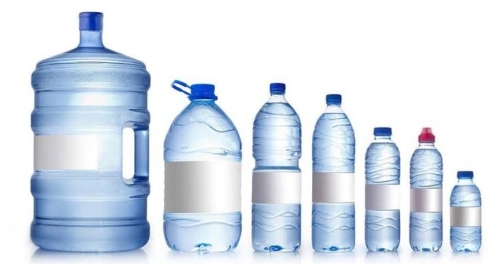Article by Dr Paul Batman, PhD.
Over the past few years several fatalities have been reported on a number of long distance adventure treks. Initially health professionals were at a loss to explain why apparently healthy well-prepared trekkers could die on some of these walks. It was initially thought that these deaths must have been caused by some underlying pathological condition that trekkers had brought to the track. Combine with this over-exertion, the trekkers could possibly have died of a heart condition or similar overexertion conditions that resulted in the body malfunctioning and death.
Since 2001 one area that has been under intense scrutiny is the amount of fluid that we should drink during leisure time or during all forms of exercise. It’s not unusual to see vast numbers of people walking or exercising with water bottles or sports drinks in order to keep their body’s hydrated. Some authorities have further suggested that to maintain the correct fluid levels within our body we should consume at least 8 glasses of water per day.
It is now becoming more apparent that it is possible to hydrate too much!
An increasing number of athletes, such as marathon runners, triathletes and even hikers can severely dilute their blood by drinking too much water or too many sports drinks. The consequence for some is to fall gravely ill with the possibility of even dying. So how is this possible, when we have always been told to drink as much water as possible to keep hydrated?
As a result of this now recognised condition, more people are now presenting to allied health professionals with a condition called hyponatremia.
 In hyponatremia, factors ranging from underlying medical conditions to drinking too much water during long duration or very intense activity can cause the sodium in our body to become diluted, reducing its levels throughout our body.
In hyponatremia, factors ranging from underlying medical conditions to drinking too much water during long duration or very intense activity can cause the sodium in our body to become diluted, reducing its levels throughout our body.
When our sodium levels fall, our body’s water levels rise and our cells begin to swell causing many health problems, from mild to life threatening.
Sodium is an important electrolyte that helps to regulate the amount of water in and around our cells and is important in muscle contractions and nervous system activity.
After blood sodium levels begin to drop, the brain sodium levels remain normal. Fluid then moves from an area of low sodium concentration into areas with high sodium levels resulting in a movement of sodium from the bloodstream into the brain, causing the brain to swell. As a result the brain expands and because of its limited space it becomes compressed causing headache, nausea, and blurred vision. The brain stem becomes compressed affecting areas that controls vital functions such as breathing.
During intense exercise the kidneys cannot excrete the excess water. As people keep drinking, the extra water moves into their cells, including the brain cells.
Since hyponatremia has the same symptoms as pure dehydration with normal blood sodium levels, the only accurate method to diagnose this condition is with a blood test.
The signs and symptoms of hyponatremia include: nausea and vomiting, headache, confusion, loss of energy and fatigue, restlessness and irritability, muscle weakness, spasms or cramps, seizures, and coma. As blood sodium levels drop even lower, the person becomes confused, develops seizures and falls unconscious.
A number of studies have reported a higher incidence of hyponatremia in females than males. This has been explained by the role that estrogen and progesterone play in the limiting effect they have on sodium and potassium concentrations moving into and out of the cell.
Where once this condition was predominately seen in ultra endurance events we are now seeing it in everyday fitness enthusiasts.
After years of telling athletes to drink as much liquid as possible to avoid dehydration, exercise physiologists are now saying that drinking too much during intense or prolonged exercise poses a potentially even greater health risk.
Hyponatremia requires skilled management. Often the first impulse of an inexperienced health professional is to give the sufferer intravenous fluids, which dilutes the blood sodium levels even further swelling the brain and potentially putting the client at risk. A small volume of a highly concentrated sodium or saline solution given intravenously can save a client’s life by pulling water out of swollen brain cells.
Hyponatremia is very preventable. To prevent hyponatremia it is recommended that we drink when we first get thirsty and that the maximum fluid intake should be limited to between 400- 800 ml per hour. It is just as effective for us to recognise the symptoms of hyponatremia and then act to prevent them. There is little need to super hydrate before our normal exercise session. Like everything in life “too much of a good thing can also be harmful”.
In a fitness training or gym environment, there is little likelihood we would require more than 400-800 ml of fluid per hour. Obviously in more prolonged ultra-endurance events a greater water intake might be necessary.
And remember – as with alcohol – everything in moderation!
